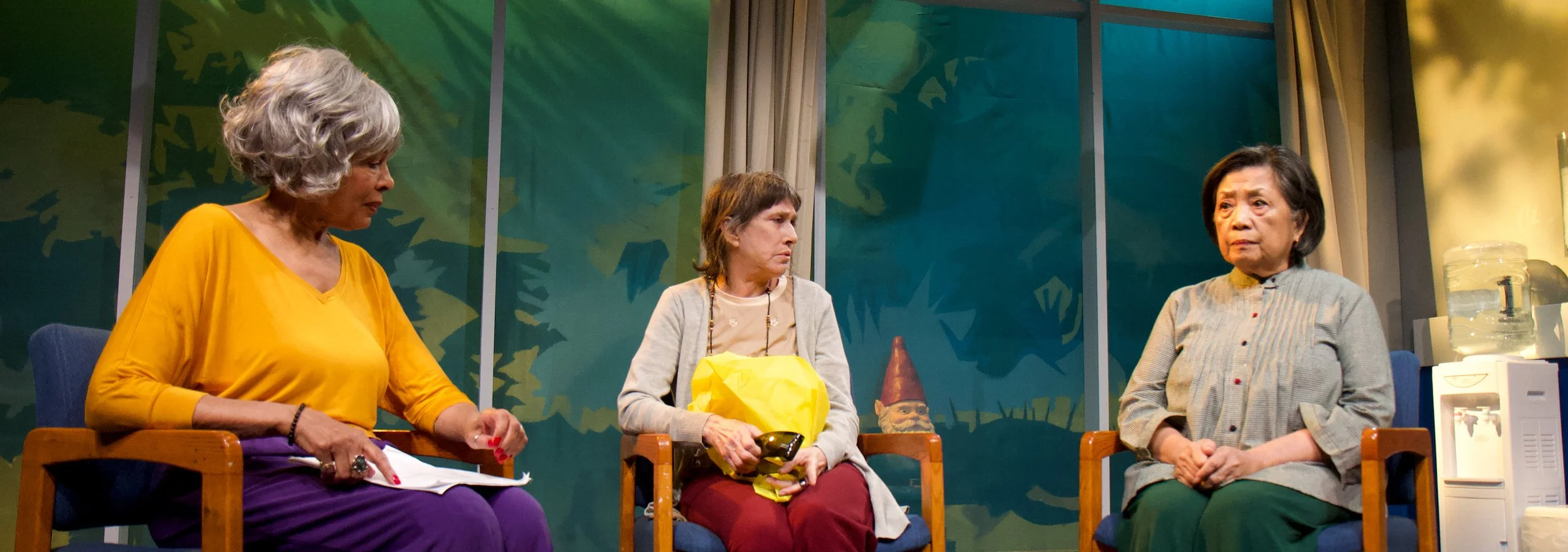Family ties are known to bind, but they’ve rarely been as constricting as they are in August Schulenburg’s challenging new play, Jacob’s House. Serving as both historical fiction and Biblical allegory, Schulenburg sets the bar high, and at times this very talented playwright’s heavy lifting feels like a bit of a reach. In this play, a Flux Theatre Ensemble production directed by Kelly O’Donnell at the Access Theater, Dinah (Jane Lincoln Taylor) and Joe (Zack Calhoon) are sorting through their father’s possessions in the attic of his house following his funeral. Since Joe is significantly younger than Dinah, his memories of Jacob, his father, filter through a different prism than the perspective of his older sister. Dinah fills him – and the audience, as well – in on some of the many stories of Jacob’s life.
It turns out that with the help of his mother, Rebecca, Jacob (Matthew Archambault) tricked his father, Isaac (Johnna Adams), into blessing him and tricked elder brother Esau (Anthony Wills Jr.) out of his birthright. Later, though he loves Rachel (Kelli Dawn Holsopple, Jacob ends up being manipulated into marrying her own older sister, Leah (Tiffany Clementi). Jacob eventually assumes an awesome amount of responsibility and power.
Do these stories sound familiar? Perhaps the names ring a bell? They very well might, since they come straight from the Old Testament. In House, Schulenburg takes these events and stretches them out over an elongated period of our nation’s history, covering everything from the American Revolution to the First World War.
The events set in the past are the ones that capture the audience most, not just because these are well-known tales, but because the stakes are so much higher. Even the entrance of Tamar (Jessica Angleskahn), a modern-day antagonist who becomes an obstacle to Dinah and Joe’s inheritance, feels more contrived than urgent. Tamar becomes too much of a storytelling tool, a device used to offer lots of exposition and instigate some of Dinah’s more confessional revelations to Joe. (This choice may be due to the fact that Schulenburg reportedly had little time to write the piece; when the rights to another intended show fell through, he drafted House in just a few days.)
Other aspects of the plot still feel somewhat undercooked – how exactly are these parables, so lovingly lifted from Genesis, supposed to inform the contemporary tragic story at the center of the show? And because Dinah, Joe and Tamar spend so much of the play introducing new information, one never gets the sense of any familial connection. They feel more like strangers telling their life story and finding random coincidences than demonstrating the intuitive understanding, both good and bad, that comes with the intimacy relatives share with each other.
And yet, as always, Flux has such sterling talent onstage and behind the scenes that their professionalism makes House an effort worthy of serious attention. O’Donnell proves to be a visionary, able to stage the historic and modern day scenes around each other without confusing temporal perspective. And Jason Paradine’s detailed set accurately recalls the effects that might litter a truly lived-in home.
Most of all, O’Donnell’s acting ensemble raises the game. The women have what I found to be the far more intriguing roles -– they are the ones connected to most of the show’s secrets and duplicity, after all -- and Angleskahn and Taylor sink their claws into their meaty roles. But while they get to drive most of their scenes, Calhoon has trickier terrain, since almost his entire role is reactive. It’s easy to get lost in such a part, but the actor navigates it quite convincingly. Archambault captivates as Jacob, charting the man’s most peculiar journey and shading in the character developments required to bridge one scene to the next. (Another choice, though, in which featured members of the cast play multiple roles, takes a while too long to catch onto.)
While I review House, I very much still see Jacob’s life as an unfinished one at this juncture. Schulenburg has his work cut out for him, but is clearly off to a great start. In continuing to build House, he couldn’t ask for a greater team of architects.






